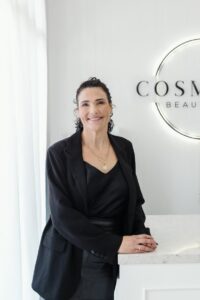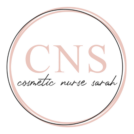Before and After Protocol for Non-Surgical Cosmetic Treatments: Insights from Cosmetic Nurse Sarah 💉✨

Non surgical treatments like PRP (Platelet-Rich Plasma), PDO threads, and other aesthetic procedures provide excellent results, but proper care before and after your treatment is essential for achieving the best outcome.
Cosmetic Nurse Sarah shares her expert advice on preparing for and caring for your skin after your procedure, including important medical considerations and aftercare tips.
PRP (Platelet-Rich Plasma) Treatment: A Comprehensive Guide 💉💉
PRP treatment uses your own blood to rejuvenate and stimulate collagen production, improving skin texture, reducing wrinkles, and enhancing overall skin tone. It’s commonly used on the face, under the eyes, and on the scalp to promote hair growth.
Before Treatment:
- Consultation and Medical History: During your consultation, it’s essential to inform your nurse about any history of medication allergies, anaphylaxis, or other medical conditions. Make sure to provide a list of any medications you are currently taking, as some medications may affect your treatment. 🩺
- Avoid Blood Thinners: Discontinue the use of blood-thinning medications, such as aspirin, ibuprofen, or other over-the-counter medications, for at least 5-7 days before treatment to reduce the risk of bruising and bleeding. 💊
- Contraindications: PRP treatment is not recommended for pregnant or breastfeeding women 🤰, individuals with acute or chronic skin or immune disorders, liver diseases, sepsis, or blood disorders. Additionally, it is not suitable for smokers or those using corticosteroids. 🚭
- Hydrate and Avoid Alcohol and Caffeine: Drink plenty of water leading up to your appointment and avoid alcohol and caffeine 24 hours prior to treatment, as these can affect hydration and increase swelling. 💧☕
- No Makeup: On the day of your treatment, avoid wearing makeup to ensure the nurse has clear access to your skin. 💄❌
After Treatment:
- Avoid Touching the Area: For the first 24 hours post-treatment, avoid touching your face to prevent introducing bacteria. 🚫
- Sun Protection: Minimise sun exposure for at least 2-3 days after your treatment, and wear a broad-spectrum sunscreen if you must go outside. ☀️🧴
- Gentle Skincare: For at least a week after your PRP treatment, avoid using harsh skincare products like exfoliants, retinol, or products containing alcohol. Stick to gentle cleansers and moisturisers to support your skin’s healing process. 🧴🌿
- Hydration: Continue to drink plenty of water to help your skin stay hydrated and aid in the healing process. 💦
- Expect Mild Redness and Swelling: It’s common to experience mild redness or swelling, but this should subside within a few hours to a few days. 😊
PDO Threads: Lift and Tighten Without Surgery 💉🔩
PDO (Polydioxanone) threads are a non-surgical treatment designed to lift and tighten sagging skin. PDO threads are commonly used on the face, neck, and jawline, stimulating collagen production as they dissolve over time.
PRP treatment uses your own blood to rejuvenate and stimulate collagen production, improving skin texture, reducing wrinkles, and enhancing overall skin tone. It’s commonly used on the face, under the eyes, and on the scalp to promote hair growth.
Before Treatment:
- Consultation and Medical History: Ensure that you disclose any history of allergies, anaphylaxis, or other relevant medical conditions. Your nurse will need to know about any current medications, particularly if you’re on blood thinners or corticosteroids, as these may affect the treatment. 🩺💊
- Contraindications: PDO threads are not suitable for pregnant or breastfeeding women, those with chronic or acute skin or immune disorders, liver disease, sepsis, or blood disorders. Smoking may also affect the healing process, so it’s advised to refrain from smoking for at least a few days before treatment. 🚭🤰
- Avoid Alcohol and Smoking: Both alcohol and smoking can impact circulation and healing, so avoid them for at least 24 hours before treatment. 🍷❌
- Hydrate Well: Drink plenty of water before your treatment to support your skin’s recovery. 💧
After Treatment:
- Post-Treatment Swelling and Bruising: It is normal to experience mild swelling, bruising, or discomfort immediately after the procedure, which usually resolves within a few days. 💆♀️🩸
- Avoid Touching the Area: For the first week, refrain from touching, massaging, or applying pressure to the treated areas to avoid disturbing the PDO threads. ✋❌
- Gentle Skincare: Stick to a gentle skincare routine for at least 48 hours after treatment. Avoid scrubs, exfoliants, or products with active ingredients that could irritate your skin. 🧴🌸
- Avoid Intense Exercise: Refrain from strenuous exercise for about 1-2 weeks following the treatment to prevent putting unnecessary strain on the threads. 🏋️♀️🚫
- Sleep Position: Sleep with your head elevated for the first few nights to reduce swelling. 😴🛏️
Non-Surgical Aesthetic Treatments: Enhancing Your Natural Beauty ✨🌟
Non-surgical aesthetic treatments include a wide variety of procedures, such as dermal fillers, anti-wrinkle injections, and laser skin treatments, all designed to enhance and rejuvenate the skin without the need for surgery.
Before Treatment:
- Consultation and Medical History: Inform your cosmetic nurse about any history of medication allergies, anaphylaxis, or any other medical conditions. It’s essential to share a list of any current medications you are taking, especially blood thinners, corticosteroids, or medications related to blood disorders. 🩺💉
- Contraindications: Non-surgical aesthetic treatments are not recommended for pregnant or breastfeeding women, individuals with acute or chronic skin conditions, immune disorders, liver disease, sepsis, or blood disorders. If you smoke, are using corticosteroids, or have a fever, it’s important to discuss these factors with your nurse before proceeding with treatment. 🚭🤰💊
- Avoid Alcohol and Caffeine: For the best results, avoid alcohol and caffeine for 24 hours before treatment. 🍷☕
- Hydrate: Make sure to drink plenty of water before your appointment to ensure optimal skin hydration. 💧
After Treatment:
- Avoid Touching the Area: Avoid touching or massaging the treated areas for at least 24-48 hours post-treatment to prevent irritation or infection. 🚫
- Sun Protection: Limit direct sun exposure for several days following your treatment. Always wear a broad-spectrum sunscreen when going outside. ☀️🧴
- Avoid Intense Exercise: Refrain from vigorous exercise or activities that induce sweating for 24-48 hours after treatment to avoid inflammation and bruising. 💪🚫
- Mild Swelling and Bruising: Mild swelling or bruising is normal and should subside within a few days. 🌸
- Skincare Restrictions: For at least a week following your treatment, avoid using harsh skincare products like exfoliants, retinoids, or any products with active ingredients. Stick to gentle, hydrating skincare to help your skin recover. 🧴🌿
